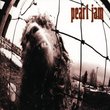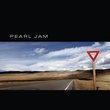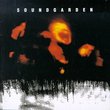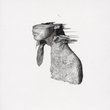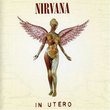| All Artists: Pearl Jam Title: Vitalogy (3 Studio) Members Wishing: 0 Total Copies: 10 Label: Epic Release Date: 2/3/2009 Album Type: Import Genres: Alternative Rock, Rock, Metal Style: Number of Discs: 1 SwapaCD Credits: 1 Other Editions: Vitalogy, Vitalogy UPCs: 074646690024, 5099747786129 |
Search - Pearl Jam :: Vitalogy (3 Studio)
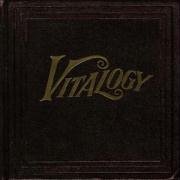 | Pearl Jam Vitalogy (3 Studio) Genres: Alternative Rock, Rock, Metal
Vitalogy reaffirms the Seattle quintet's status as the principled, proudly confused voice of a generation. On their third album, they've found their footing as a raw, forward-looking '90s rock act that fearlessly tackles t... more » ![header=[] body=[This CD is available to be requested as disc only.]](/images/attributes/disc.png?v=a4e11020) ![header=[] body=[This CD is available to be requested with the disc and back insert.]](/images/attributes/disc_back.png?v=a4e11020) ![header=[] body=[This CD is available to be requested with the disc and front insert.]](/images/attributes/disc_front.png?v=a4e11020) ![header=[] body=[This CD is available to be requested with the disc, front and back inserts.]](/images/attributes/disc_front_back.png?v=a4e11020) |
Larger Image |
CD DetailsSynopsis
Amazon.com essential recording Vitalogy reaffirms the Seattle quintet's status as the principled, proudly confused voice of a generation. On their third album, they've found their footing as a raw, forward-looking '90s rock act that fearlessly tackles the Biggest Questions. Lead track "Spin the Black Circle" celebrates the healing power of Eddie Vedder's LP collection, but it is overshadowed by such masterstrokes as "Immortality" (which can be read, right or wrong, as a reaction to Kurt Cobain's suicide), the Lennonesque "Tremor Christ" and a thrilling anthem for the pro-choice movement, "Whipping." --Jeff Bateman Similar CDsSimilarly Requested CDs
|
Member CD ReviewsReviewed on 8/27/2013... Has some really great tracks (Whipping, Not For You, Satan Bed, Betterman); but on others, they're trying too hard to be edgy and offbeat, and it just doesn't work. They are a straightforward rock-n-roll band with grunge/Seattle influence, and they should stick to what they know and do best IMO. But kudos to them for trying to go outta the box. :) 1 of 1 member(s) found this review helpful.
CD ReviewsThe White Album of the 90s Mike London | Oxford, UK | 01/13/2000 (4 out of 5 stars) "Back in 1968, The Beatles released their double set called The Beatles, more commonly known as The White Album. Within those original album sleaves were four sides of brilliant and strange music. But there was also filler. Strange music. We're talking Revolution 9, Rocky Racoon, Why Don't We Do It In the Road, and several others.In 1994, Pearl Jam released Vitalogy. Although different in sound, it was no different in content. On this album we had moments of sheer brilliance. Immortality, Corduary, Nothing Man, Spin the Black Circle, and Better Man really shone out. But we also have some strange cuts on this one. Privacy, Bugs, Aye Davinita, and Stupid Mop (listed as Hey Foxymophandlemama, That's Me on the back of the booklet). Then there were mediocra songs also.This album has some brilliant moments. But it is, as Rolling Stone said, a wildely uneven and chaotic record. I grew up on Pearl Jam, my brother spinning Ten (and later vs.) into oblivion on his CD player as we went to private Christian school. Some of these songs on here are just unfit. pry, to is absoluetely stupid (if you play it backwards get Pete Townsend Saved My Life). Stupid Mop, clocking in at over seven minutes long, is a good 6 minutes and 15 seconds to long.Sorry, the White Album is better. All the filler on that one had a purpose. And even the filler was listenable, and was cool. Plus, it was a double set. Not only that, it was The Beatles. And I can actually dig Revolution #9. Try as I might, I can't do that with Stupid Mop. Interesting lyrics though. Should have been released as an oddity track on some obscure single. Both are good, but The White Album is five stars. One thing about this is it didn't inspire any cult leaders/serial killers like its prentecessor did. But when its brilliant, its brilliant." An ambitious third album Daniel Maltzman | Arlington, MA, USA | 11/20/2005 (4 out of 5 stars) "4.5 Stars
A common complaint fans often have against their favorite band is that "the early stuff is great, but then they went commercial/sold out." No such complaint could ever be made against Pearl Jam. Quite the opposite; while Pearl Jam's early albums, most notably "Ten" (1991) and "Vs." (1993) were quite radio friendly, their music became more and more obscure and arty as the band went on. With the exception of the band's straight-forward fifth album "Yield," (1998) most of Pearl Jam's work from the mid-90s up has been far less assessable than their first two albums. In this sense, Pearl Jam are like the anti-sellouts. Not caring how well an album is perceived, the band has always had the integrity to follow its artistic vision. In some respects, Pearl Jam's third album "Vitalogy" (1994) represents the end of an era. "Vitalogy" was the last Pearl Jam album to enjoy multi-platinum success and spawn numerous singles that dominated the radio. "Vitalogy" was sort of the last Pearl Jam album that "everybody" had to buy. While Pearl Jam's next two albums achieved platinum status, by the mid-to-late 90s, their reign at the top was over. While the faithful have stood by the band over the years, most of Pearl Jam's fickle audience that so loved "Ten" and "Vs.," moved on to Phish, Matchbox 20, and the Dave Mathews Band as the 90s progressed. In addition, 1994 was really the last year of the grunge era. While the Seattle movement had briefly brought authenticity back into rock in the early 90s, by 1995, with the likes of Bush and Seven Mary 3, it was back to corporate pap as usual, in the era known as post-grunge. In 1994, with the death of Cobain, in the eyes and ears of the fickle mainstream, grunge breathed its last breath. "Vitalogy" was one of the last albums from the grunge movement to enjoy a healthy reign at the top. While Pearl Jam's debut "Ten" has been pigeonholed as "grunge," it is actually one of the least grunge sounding albums in Pearl Jam's catalogue. "Ten," with its classic rock trimmings and finely crafted songs, doesn't have the distorted guitars, feedback, intense drumming, or the "fuzz" associated with the grunge sound. By contrast, "Vs." and "Vitalogy" are far more grunge sounding than the debut. Pearl Jam's second album "Vs" was a 180 degree turn from the debut "Ten." Compared to "Ten," "Vs" sounds far less polished; more stripped down, and has more of a live feel. "Vitalogy" takes the sound of "Vs." to the next level and sounds even looser, and more stripped down. But while virtually every song on "Ten" and "Vs." was a potential radio single, many of the songs on "Vitalogy are just flat out-there. Lyrically, the album is also more vague and the songs harder to decipher. In short, of the first three albums, "Vitalogy" is the most grunge-sounding, the least commercial and by far the most abstract. But none of this is meant as criticism against the album, because as loose as "Vitalogy" is, everything works. There's a fine line between having an album that's avant-garde and having one that's just a mess; luckily, "Vitalogy" never crosses that line. Pearl Jam knew what they were doing and created a rather chaotic, yet cohesive collection of songs. The opening full-throttle "Last Exit," which sounds like the band is just working out a song at a jam, immediately lets the listener know what's in store. Brash as the song is, it has melody and is fully captivating. "Spin the Back Circle," which sounds like Led Zeppelin meets the Sex Pistols, shows Pearl Jam's intense side. "Not for you" starts out slowly, giving the listener a temporary reprieve, but soon goes into full-attack-mode. An underrated song, this features a really cool solo by Mike McCready. The album slows down a notch for the sluggish "Tremor Christ," which offers an interesting contrast between its lethargic pace and Eddie Vedder's preacher-like delivery. The semi-acoustic "Nothingman," which tells the story of a wasted life, of a man that "could have been something" is both harrowing and beautiful. The free-flowing "whipping" sounds like a jam, but with structure and melody, and works for the overall flow of the album. The bizarre "Pry to" is just a minute of filler, but is atmospheric and is a good transaction to the next song. The opening chords of "Corduroy" are instantly memorable to anyone that listened to the radio back in '94. Loose, intense, stripped-down and melodic, this is Pearl Jam at their best. An ode to the dangers of conformity, "Bugs," which Vedder speaks of being besieged by bugs over the repetitive sounds of an accordion, is just flat out bizarre. While I usually skip over this track when I have "Vitalogy" in my discman, "Bugs" adds a little something out of the ordinary to the album and its inclusion is warranted. The good-but-not-great, off-center punkish "Satan's Bed" keeps up the momentum. Another PJ classic, the sensitive "Better Man" tells of the pain of having to settle. Much like "Bugs," I usually skip over the off-center instrumental "Aye Davanita," but it's still an interesting and cool track which adds flavor to the album. The death of fellow Seattle rock star Kurt Cobain no doubt impacted the band, as they pay tribute with "Immorality." The song doesn't attempt to idolize or make Cobain out to be a martyr or infallible, but rather acts as a beautiful tribute that tries to explain the tragic suicide. The song depicts Cobain (although not by name) to be a deeply troubled man, seeking solace and a release from pain. The avant-garde, bohemian-like closing "Hey Foxymophandlemama, that's me," is a bizarre, semi-instrumental with sound bytes. It's a bit like "Revolution #9" from the Beatles self-titled "White" (1968) album. I've listened to this song for eleven years, as of this writing, and I'm still not sure whether it's high-art, or just plain pretentious. Either way, it's a cool non-song that I enjoy. The packaging of the album is also really cool. The mini-book, filled with photos, drawings, and various odds-and-ends, done in the style of the 19th Century, is quite cool. It's sort of a return to the more personal and artistic days of the vinyl, as opposed to the cold and lifeless age of CDs. Because of the brashness, off-centeredness, and bizarre non-song tracks, "Vitalogy" is not the best place to start if you want to get into Pearl Jam. New listeners are advised to buy "Ten," "Vs." or the "Rearview Mirror-best of" (2004) before they pick up "Vitalogy" or subsequent albums. That said, "Vitalogy" is still an excellent album that is well worth owning. " |

 Track Listings (14) - Disc #1
Track Listings (14) - Disc #1